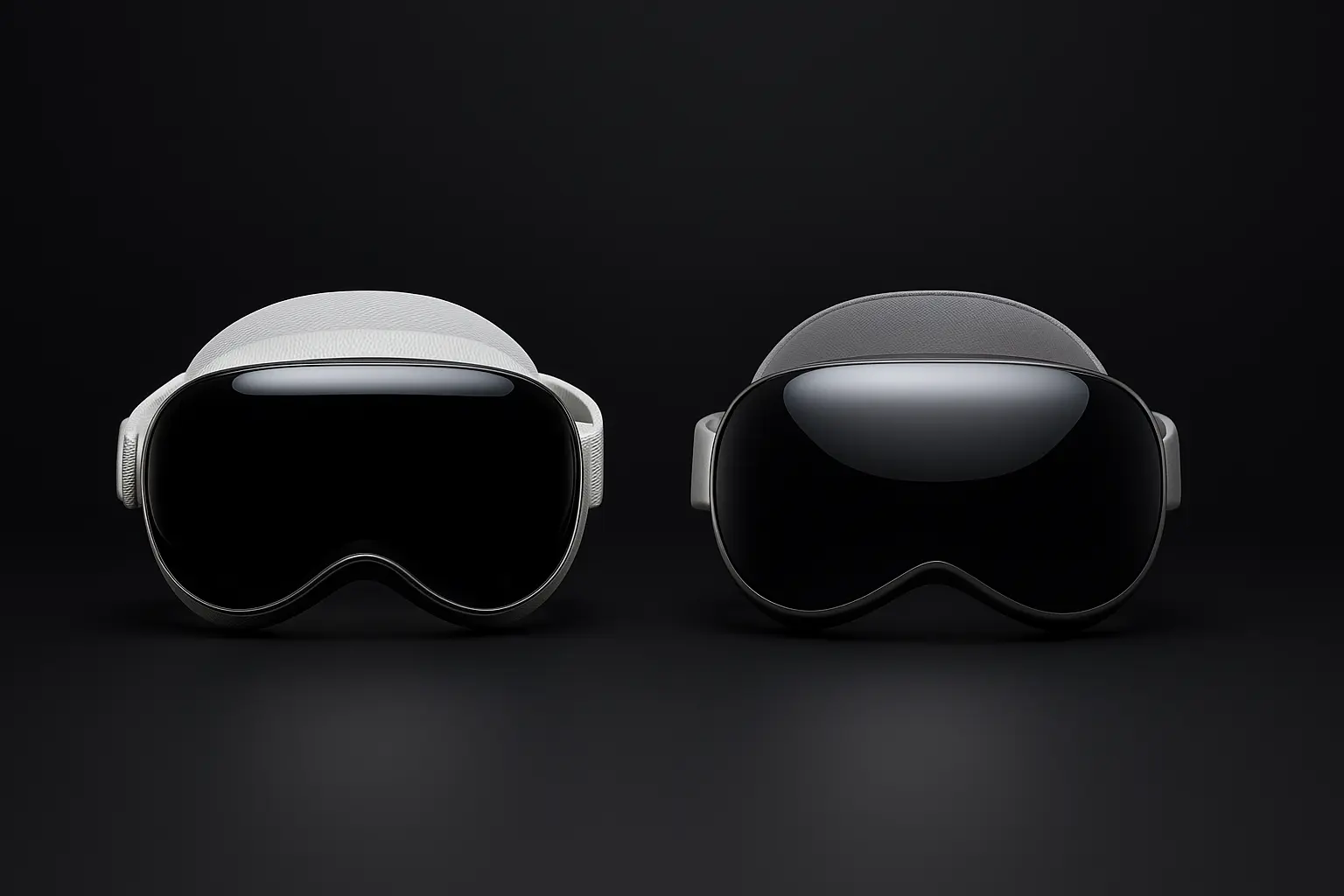When Apple introduced the original Apple Vision Pro in 2023, it redefined what spatial computing could be. Positioned as more than just a headset, it was presented as a “revolutionary spatial computer,” combining mixed reality, advanced optics, and seamless integration with the Apple ecosystem. Yet, as transformative as it was, the Vision Pro also had its drawbacks—price, comfort, and limited adoption due to its niche appeal. Now, as rumors about the Apple Vision Pro 2intensify, the question is how Apple will improve on its groundbreaking debut and whether the second-generation model can transform spatial computing from an impressive concept into a mainstream necessity.
The first major difference expected between the Vision Pro and its successor lies in performance and processing power. The original device launched with the M2 chip alongside the R1 co-processor, delivering smooth performance for immersive experiences but still showing strain during extended use with demanding applications. The Vision Pro 2 is rumored to integrate either the M4 or even the M5 chip, dramatically boosting processing capabilities while lowering energy consumption. This generational leap would not only improve multitasking but also extend battery life, a key limitation of the original model.
Comfort and design are another critical area of comparison. Early adopters of the first Vision Pro frequently pointed out its heavy build and uneven weight distribution, which made prolonged sessions challenging. Apple is reportedly addressing this with a redesigned head strap for the Vision Pro 2 that distributes weight more evenly across the head and reduces neck strain. While the original device introduced a sleek, futuristic look, the successor may focus on making the headset lighter and more practical for long-term use.
The role of artificial intelligence is also set to expand dramatically. The original Vision Pro introduced intuitive gesture control and precise eye tracking, but its AI processing power was limited compared to what’s on the horizon. The Vision Pro 2 is expected to feature an upgraded Neural Engine with more cores, enabling faster environmental adaptation, more accurate gesture recognition, and real-time customization of the interface. While the first-generation headset felt like a powerful tool, the second could evolve into a personalized digital assistant built directly into your field of vision.
| Feature | Apple Vision Pro (2023) | Apple Vision Pro 2 (Expected 2025/26) |
|---|---|---|
| Processor | M2 + R1 chip | M4 or M5 chip (more powerful & efficient) |
| Neural Engine | Limited AI cores | Expanded Neural Engine for faster AI processing |
| Comfort & Design | Heavy, uneven weight | Redesigned head strap, lighter build |
| Display | Dual 4K micro-OLED | Upgraded OLED, possible higher brightness |
| Interaction | Hand gestures, voice, eye focus | Advanced eye-tracking for navigation, refined gestures |
| Battery Life | ~2 hours (external pack) | Improved efficiency, longer sessions |
| Integration | Works with Apple ecosystem | Possible Mac-connected variant for ultra-low latency |
| Price | $3,499 | Likely premium, but possible lighter/cheaper version |
| Target Audience | Early adopters, developers, professionals | Broader audience: professionals + wider consumer reach |
Another major step forward will likely be interaction methods. While the first Vision Pro relied primarily on hand gestures, eye focus, and voice commands, the Vision Pro 2 is rumored to include full eye-tracking navigation, allowing users to scroll or select objects simply by moving their eyes. This refinement would make the experience more natural and immersive compared to the original.
A further distinction may be found in device integration. The Vision Pro already offered strong ecosystem compatibility with iPhones, Macs, and iPads. However, leaks suggest that the Vision Pro 2 could go further by introducing a variant designed for direct Mac connection, delivering ultra-low latency for professional use cases such as 3D design, animation, or surgical simulations. The original Vision Pro was revolutionary for entertainment and productivity, but the Vision Pro 2 could solidify its place as a professional tool.
Pricing and accessibility remain a big question. The original Vision Pro debuted at $3,499, putting it out of reach for most consumers. Apple may introduce a tiered approach with Vision Pro 2, offering a high-end model with maximum features alongside a lighter, more affordable version. This would broaden adoption and help position Apple not just as a pioneer but as a true market leader in mixed reality.
In conclusion, while the original Apple Vision Pro will always be remembered as the device that introduced spatial computing to the mainstream, the Vision Pro 2 has the potential to refine and expand that vision. With improvements in processing power, comfort, AI-driven interaction, and professional integration, Apple is not just iterating but evolving toward making mixed reality part of daily life. Whether it succeeds depends on how well it balances innovation with accessibility, but one thing is clear: the comparison between Vision Pro and Vision Pro 2 highlights how far spatial computing has come in just a few years—and how much further it can go.
👉 For more insights into the latest AR/VR devices, visit our Technology section.
👉 To see side-by-side evaluations of Apple products, check out Reviews.
